![]()
![]()
![]()
Use LEFT and RIGHT arrow keys to navigate between flashcards;
Use UP and DOWN arrow keys to flip the card;
H to show hint;
A reads text to speech;
7 Cards in this Set
- Front
- Back

interphase |
____________is made up of three subphases: G1 , S, and G2. -Gap 1 (G1): cell growth and normal functions -DNA synthesis (S): copies DNA -Gap 2 (G2): additional growth -Mitosis (M): includes division of the cell cytoplasm (cytokinesis) |
|
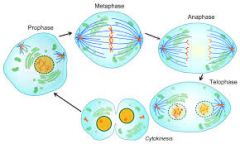
mitosis |
The purpose of _______ mitosis is a cell division: making two cell out of one. The DNA is replicated in interphase (during the S phase.) At the end of DNA replication, the cell contains 2 identical sets of DNA. In _______, the chromosomes have to break apart so that each new onlyh has one set of chromosomes. |
|
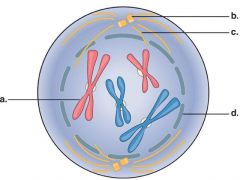
prophase |
_________ is characterized by four events: 1. Chromatin condenses to become chromosomes. 2. The nuclear membrane (envelope) dissapears. 3. Centrioles have separated and moved to oposite sides of the cell. 4. Spindle fibers form a bridge between the end of the cell. |
|
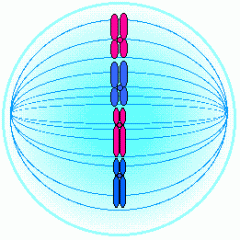
metaphase |
1. Chromosomes line up across the center of the cell. 2. Each chromosomes attaches to a spindle fiber at its centromere |
|
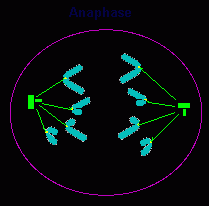
anaphase |
1. Centromeres that join the sister chromatids split. 2. Sister chromatids separate becoming individual chromosomes. 3. Seperated chromatids move to oppositesides of the cell. |
|
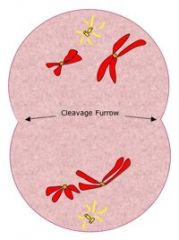
telophase |
1.Chromosomes (each consisting of a single chromatid) begin to lose their rodlike appearance.They are becoming chromatin again. 2. A new nuclear envelope forms (nuclear) around the chromosomes at each side of the cell. 3. Spindle fibers break down and dissolve. 4. Cytokinesis begins. |
|
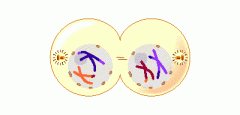
Cytokinesis |
1. __________ is the division of the cytoplasm into two individual cells. 2. The process of _________ differs somewhat in plant and animal cells. 3. In animal cells the cell membrane pinches the cell into two nearly daughter cells. 4. In plant cells a structure known as a cell plate forms midway between the 2 nucleus, which gradually develops into a separating membrane. |

